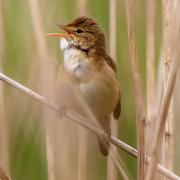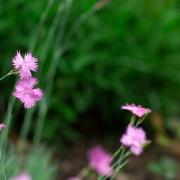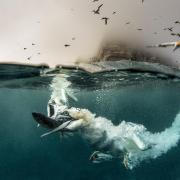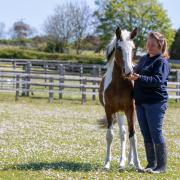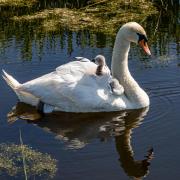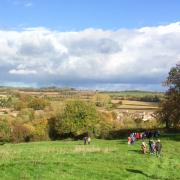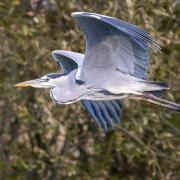As soon as we get those lovely sunny days with the promise of spring, toads are on the move!
Once the temperature rises above 5c, toads become active. Because they return to the pond that they were originally hatched in, they can often use roads to get back to their natal home.
Toad patrols were started many years ago by people concerned by the large numbers killed on our roads where a strong path can be found. The amphibians start to move at dusk which is often the time when roads can be at their busiest, so people go out armed with buckets to try and collect them. They move them safely to the pond they are trying to get to. Volunteers may well be doing this in your area and could probably do with some help if you would like to be involved.
Frogs often hibernate in the mud at the bottom of a pond whereas toads will hibernate in drier places such as under logs and rotting vegetation. They often make you jump when you find them during gardening, but they are fascinating animals that can live on land or in water. Both have delicate skin which is why they can be affected by sprays or products use on our gardens. They catch their food with their sticky tongues eating snails, slugs, worms and other insects so are really good to have in our garden.
Frogs have smooth skin with colours varying from green, olive, brown and yellow. They can breathe through the skin which allows them to stay under water for long periods. Frogs have special glands to keep their skin moist. They hop and, in the spring, croak to attract the female. Once they have found their partner, they cling to the female and will even be carried to the pond if attached to her. The male fertilises the eggs as they are being laid in a pond. This forms a clump of jellied eggs known as frogspawn.
The toad has a warty skin that is dry and and darker in colour. Unlike the frog, toads cannot breathe through their skin which is why they spend their time on land. They walk rather than hop and when the spawn is laid in ponds the eggs are in strings rather than clumps.
Frog and toad spawn should not be moved from where they are laid as they are delicate and laid purposely where there is food and conditions to aid their survival. Having said that, frogspawn has been found in puddles rather than ponds. In 16 weeks, the eggs change into froglets but have to run the risk of being eaten by predators as the fertilised eggs float near the surface of the water. The tadpoles eat algae but as they change, they eventually change to being carnivorous.
So, frogspawn heralds the spring that we are all waiting for. The garden starts to show signs of growing and we look forward to sunny days! Spring also means wildlife babies so do ring for advice if needed. We don’t want to take animals into care if they can stay with their mothers.
For advice call 01278 783250.




